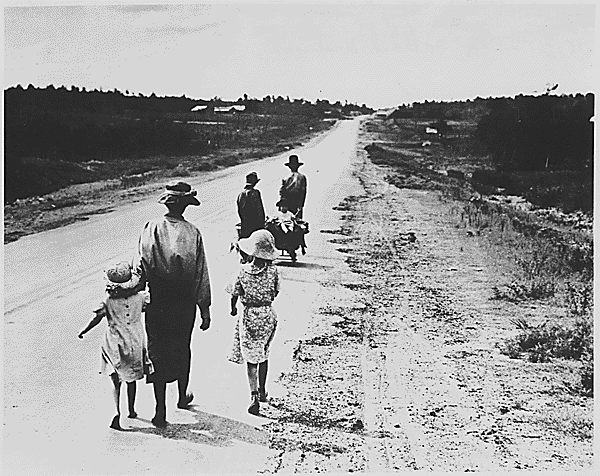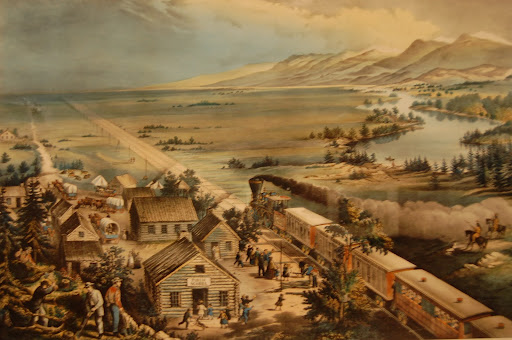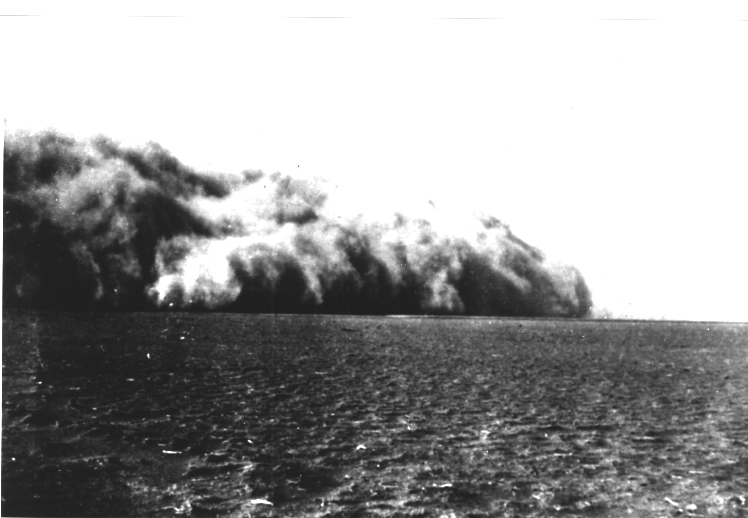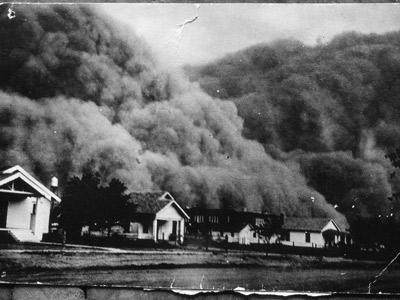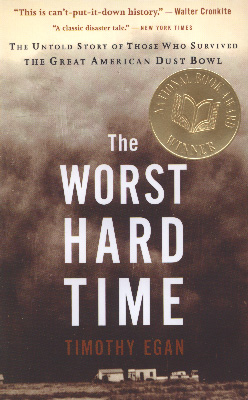 Timothy Egan, The Worst Hard Time,
Timothy Egan, The Worst Hard Time,
April 14 –80th Anniversary of Black Sunday
"It scares them because of the forced intimacy with a place that gives nothing back to a stranger. . . ."
p. 1.
“At its peak the Dust Bowl covered one hundred million acres.”
“More than a quarter million people fled the Dust Bowl in the 1930s.”
P. 9.
"One in three
families" left the high plains by 1939.
PROMISE 1901-1930
Portrayed as both "A Garden in the Grasslands" or the "Great American Desert"; The contrasts had tragic consequences for the nation.
I • PROMISE
1901-1930
1. The Wanderer,
Bam White’s family
migrates on to the high plains to get a ranch in Amarillo
2. No Man’s Land,
“It was founded on a fraud. Except there
was not a single tree in Boise City.” Le
bois French word for trees
3. Creating Dalhart,
Southern panhandle Plains “the old XIT grasslands were still being carved up . . . .
ranches
were disappearing by the day”
A town grew from nothing into something and then?
4. High Plains Deutsch,
“by the summer of 1929
the United States had a food surplus….There was a glut
in Europe as well.”
5. The Last Great
Plow-up,
The stock market crashed on October 29, 1929.
6. First Wave,
6-27-31, the bank did
not open for business
7. A Darkening,
“two years into a
drought so severe that less rain fell in eastern Montana than normally fell in
the desert of southern Arizona.”
"Subsistence farming may have kept people
alive, but it did nothing for the land, which was going fallow section by
section."
"At the end of 1931, . . . of sixteen
million acres in cultivation in the state, thirteen million were seriously
eroded.
P. 111.
"Around noon on
January 21, 1932, a cloud ten thousand feet high from ground to top appeared
just outside of Amarillo."
"Nobody knew what
to call it."
"It was thick like course animal hair; it was alive People close to it described a feeling of being in a blizzard–a black blizzard, "
P. 113.
So dark at noon that "…It
looked like dusk outside."
"Its the earth
itself, Bam said. The earth is on the move."
8. In a Dry Land, “Life without water did
strange things to the land.”
FDR and the promises of
1931-1936 – conservation anew
"Next up: try to save the farm. Free-market
agricultural economics was over, for good. Look what it had done....
"The average farmer was earning three hundred dollars per year–an 80 percent drop in income from a decade earlier."
P. 133.
10. Big Blows, “The land would not die
an easy death.…The skies carried soil from state to
state.”
PROMISE 1901-1930
III • BLOWUP, 1934-1939

11. Triage, “There was not a buyer in the hemisphere
for the wretched looking cattle stumbling over the prairie… all bound up with
dust.”
12. The Long Darkness, “The third option they
could steal food.”
13. The Struggle for Air, “Life in the galloping
flatlands was a pact with nature. It gave as much as it took, and in 1935, it
was all take.”
P. 175.
14. Showdown in Dalhart, “As the ground took flight through the middle year of the Dirty Thirties, the courts had been contend with a new type of mental illness – the person driven mad by dust.” P. 177.
“ 'Dust is killing me!' she shouted again. 'Its killing my children.' " P. 178.
“Conservation, --that was the new
word coming from Big Hugh Bennett.”
“He had sent one of his scientists to Dallam County, and the old man told farmers they had been 'practicing suicidal production.' on the land."
". . . to change their ways, [they] would have to act as one."
P. 178.
pp. 176-192.
15. Duster’s Eve, “This year 1935, had
been one duster after another, four years into the drought…”
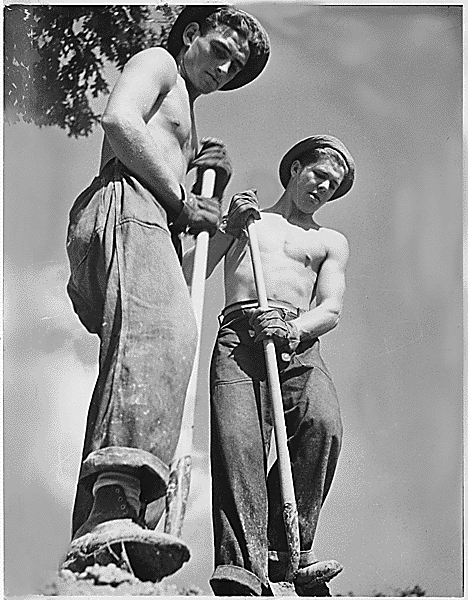 “Sheriff Barrick said the roads out of town [Boise City] were blocked by huge drifts. The CCC crews [two CCC workers photographed on the right] would no sooner dig out one drift than another would appear, covering a quarter of a mile section of road."
“Sheriff Barrick said the roads out of town [Boise City] were blocked by huge drifts. The CCC crews [two CCC workers photographed on the right] would no sooner dig out one drift than another would appear, covering a quarter of a mile section of road."
" . . . pinned down at the edge of town, they were forced to return."
“The volume of dirt that had been thrown into the skies was extraordinary."
". . . forty six million truck-loads." blown from one side of Kansas to the east.
Pp. 195-196.


Western Kansas farm home behind a dune and a farm near Dalhart Texas in the 1930s.
16. Black Sunday, “My God! Here it comes!" Telegraphed message. P. 204.
“A woman. . . called the newspaper in Amarillo to alert them that the biggest duster of all was rolling south." P. 220.
“Winds screamed over the
grasslands, carrying dust so heavy that visibility was less than 100 yards.”
“Charring the sky in five states.”
“It took an hour for the . . . duster to travel from the border towns of Amarillo . . . .the biggest city in the Texas Panhandle went dark, and its 42,000 residents choked on the same thick mass that had begun its roll in the Dakotas, clawing the barren plains.”
“A fury that has neve been duplicated.” P. 221.
pp. 198-221.
17. A Call to Arms, “midnight at noon, a duster wiped out the sun!”
“rule life in the dust bowl of the continent.” P. 222.
18. Goings,
“In may, the
temperature rose to 105 degrees, the highest the mercury had ever been that early
in the year in Baca County [Texas]."
Most Baca–ready to fold–residents
would have starved without the government."
"…the land that
had been so full of ancient mystery, these secrets of the conquistadores, these
Indian burial grounds, this place of ghost grass and ghost bison."
p. 241.
“At the darkest hour, .
. . a farmer’s life . . . during a decade when homesteads became graveyards.”
Don Hartwell, 1/1936, p. 242.
20. The Saddest Land,
“More than 850 million
tons of topsoil had blown off the southern plains in the last year.”
For
21. Verdict,
“Bennett believed that
the Great Plains could be saved; it did not have to blow away and lose its
people.”
Hugh Hammond Bennett | Hugh Hammond Bennett plans
22. Cornhusker II,
“it took a full days
work at one of the government road jobs to fill up your tank.”
“Nobody had money for
tractor fuel, or hiring farm hands, or even for buying seed.”
24. Cornhusker III,
“An examination of the
tree found that Nebraska had been through 20 droughts in 748 years.”
The farm the Hartwell's had possessed since 1909
was by 1938 “…three lame horses and a single dog.”
"The bank took the land...." P. 301.
25. Rain,
“its CCC soil saving
and tree planting crews to the Panhandle, and when they came they were greeted like
firemen at ablaze.”
“nearly forty million saplings, 3,600 miles of living hope
planted. . . .”
“Roosevelt had always believed in the power of restoration.”
P. 307.
“The high
Plains never fully recovered from the dust bowl.”
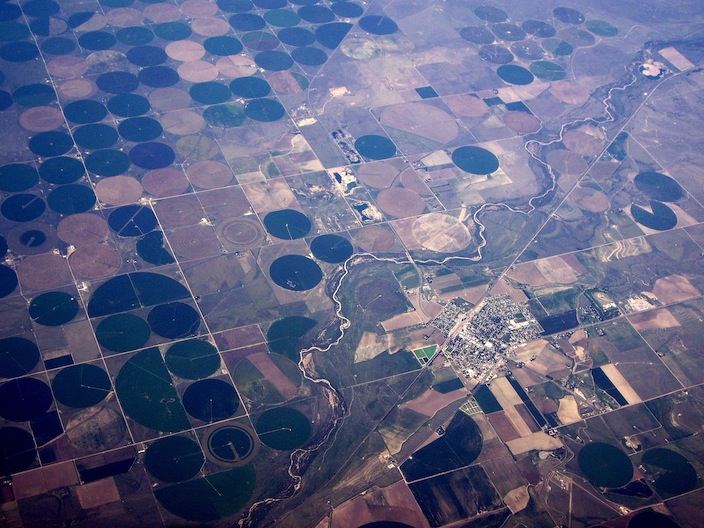
"All told, the government bought 11.3
million acres of dusted-over farm fields and tried to return much of it to
grassland."
"The
original intent was to purchase up to 75 million acres. After more than
sixty-five years
P. 309.
Part One | Part Two | Part Three
Writing | writing from texts | how to approach writing | writing papers | writing & world views | write
Science index | Genetic index | Social subjects | Population index | Global Warming index | Nature index | Brief
![]()
